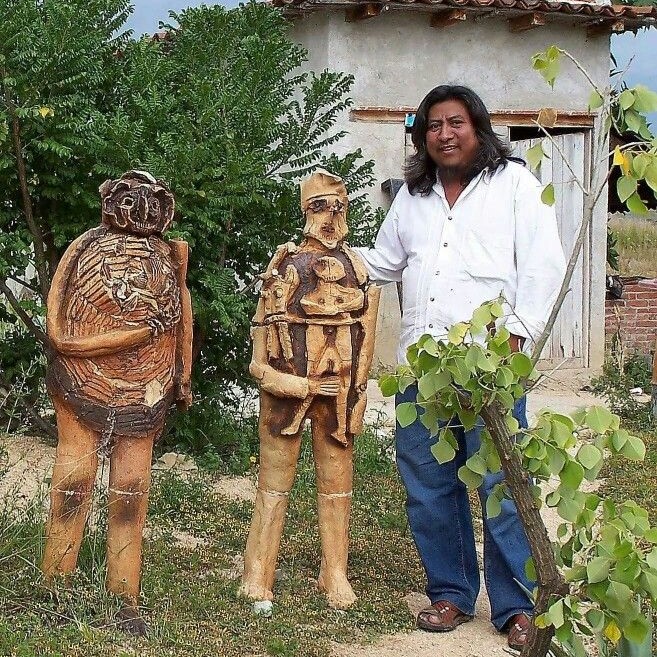

Alejandro Santiago
Mexico
(1964)
Alejandro Santiago Ramírez was an exceptional artist who, through his work, gave voice to the marginalized and brought visibility to the complex reality of migration. His talent, social commitment, and sensitivity made him a fundamental figure in contemporary Mexican art.
He was born on April 22, 1964, in Teococuilco de Marcos Pérez, a small town in the Zapotec highlands of Oaxaca, Mexico. From an early age, he was surrounded by the rich culture and traditions of his region, which undoubtedly deeply influenced his artistic development. At the age of nine, he moved with his family to the city of Oaxaca, seeking better educational and employment opportunities.
In Oaxaca City, Alejandro Santiago discovered his passion for art. He entered the School of Fine Arts at the Benito Juárez Autonomous University of Oaxaca, where he trained as a painter and sculptor. He also studied at the Center for Art Education and was one of the first graduates of the Rufino Tamayo Workshop of Plastic Arts. During his studies, he had the opportunity to learn from renowned masters such as Rodolfo Nieto and Francisco Toledo, who guided him in his exploration of different artistic techniques and styles.
After graduating, Alejandro Santiago began to develop his own artistic voice, characterized by a deep social commitment and sensitivity to the issues affecting his community. His work focused mainly on sculpture, although he also made significant contributions in painting and printmaking. Throughout his career, he continued his education and production in various places in Europe and the United States.
After a decade devoted to his art abroad, Alejandro Santiago returned to his hometown, Oaxaca. Impacted by the scarcity of people in his village, he set out to honor those who had left and "repopulate" his impoverished community. For six years, starting in 2002, Santiago carried out his vision of a monumental installation that symbolizes the migrants who left rural life in Mexico in search of employment and better life opportunities in the United States. Undoubtedly, his most recognized work is the group of sculptures "2501 Migrants" made with the help of a grant from the Rockefeller Foundation and a team of more than 30 artisans. This imposing installation, composed of 2501 life-size clay figures, blends characteristics of pre-Hispanic and modern art, with each one being unique yet maintaining a sense of anonymity. The works were created between 2002 and 2008 and have become an icon of contemporary Mexican art, exhibited in important museums and galleries around the world.
Using the remaining clay from "2501 Migrants," Santiago launched a second project that represents migrant families. Each group shows a member heading north while reflecting on what they have left behind. At the Rufino Tamayo Museum in Oaxaca, the central courtyard displays a part of "Migrant Families," with some of the original "2501 Migrants" looking down from above.
In addition to migrants, Alejandro Santiago created other significant works such as "The Last Supper," "The Exodus," and "Children of the Earth." His work was characterized by the use of materials such as clay, wood, and metal, and by the incorporation of symbolic elements that reflected his vision of Mexico's social and cultural reality.
Throughout his career, Alejandro Santiago received numerous awards for his artistic work, including the National Youth Award in 1994 and the Monterrey Sculpture Biennial Award in 2001. His work has been exhibited in major museums and galleries in Mexico and abroad and has been praised by critics for its depth, sensitivity, and social commitment.
Unfortunately, Alejandro Santiago died of a heart attack on July 22, 2013, in Oaxaca, at the young age of 49. His death left a great void in the world of Mexican art, but his legacy lives on through his work, which continues to inspire and move people around the world. He is survived by his wife Zoila López, his son Lucio Santiago, and his daughter Alejandra Santiago.

